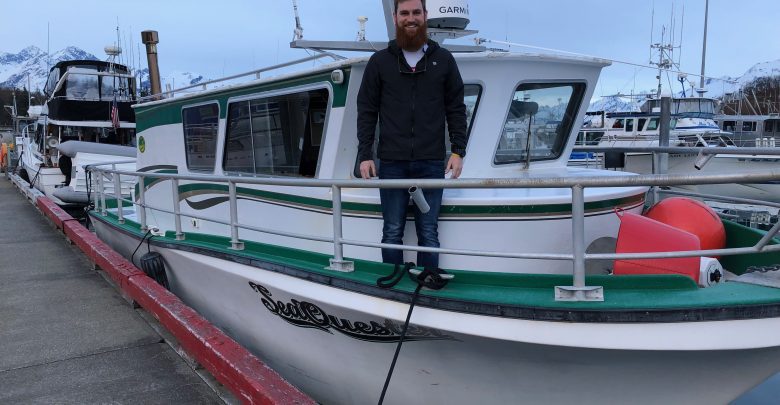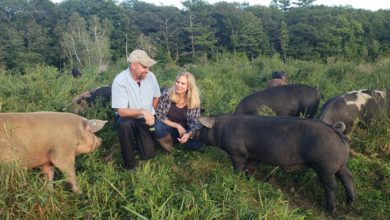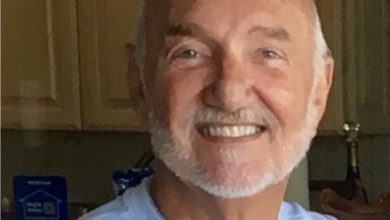Alaska provides new opportunities for Smoes

By FRED KRONER
fred@mahometnews.com
Forrest Smoes became accustomed to life on the run as a student at Mahomet-Seymour High School.
A standout two-sport athlete, Smoes excelled in cross-country and track and field.
That lifestyle is now part of his past. The former all-state runner hasn’t slowed down, however, just moved in a different direction.
The 2014 Mahomet-Seymour graduate is a seasonal worker in Alaska, guiding deep sea fishing expeditions from May through August and then devoting nearly two months to helping guide mountain goat hunts in Valdez.
“I welcome the adventure of the unknown,” Smoes said.
**
His journey started with a short jaunt.
Smoes went from Mahomet-Seymour to Parkland College.
“I didn’t know what I wanted to study or where I wanted to study,” Smoes said.
He spent the first year devising a plan. A lifelong Champaign County resident, he felt called to explore other areas.
“I was ready to see a new part of the world,” Smoes said. “I knew I would like to branch out.”
Not a fan of large cities, he originally confined his looking to smaller universities in neighboring states as well as in the Rocky Mountain area.
“I thought it would be a good fit because I love the outdoors,” Smoes said.
As he did his search, the University of Alaska-Fairbanks popped up as one that “offered a variety of majors and had affordable tuition,” he said.
His interest was strong enough that he made a campus visit, followed by a decision.
“Despite not knowing a single person there, I decided to go for it, Smoes said. “In a way, I created the opportunity for myself.”
**
The flip side of having no friends in Alaska was leaving behind the support system he had at home.
“My family and I are very close,” Smoes said, “so only being able to see each other once a year on my break was difficult at times.”
He had their support though, “because they knew that it was something I wanted to do.”
For three years, Smoes attended college full-time in Fairbanks from September through April and then relocated to Valdez — a community of about 3,000 in south-central Alaska — for the summer months.
It didn’t take long for Smoes to feel welcomed in his new environment.
“In a sense, Alaska felt more like home to me than Illinois despite living here my entire life prior to moving there,” Smoes said. “I often cross paths with people I know that want to say hi to me, whether it be at the grocery store or driving down the road.
“I’m not a stranger to people in Valdez or Fairbanks. I developed quite a few friendships.”
**
While operating a fishing boat is considered a part-time gig, during the four months of the season, the workload is never limited.
Days are pretty similar and the work week consists of six days, if not seven.
“I typically wake up about 4:45 a.m., and head to the boat at 5:30,” Smoes said.
En route, he stops to get bait for the day.
Clients arrive at the boat between 5:45 and 6 a.m.
The 38-foot boat he operates, the SeaQuester, can transport up to six customers.
“The minimum number we take is four because that is the break-even point,” Smoes said. “Any less, we lose money.
“If we only have one or two people booked on a boat, we will try to fit them on another, either with our company or another in town.”
Filling the boat is generally not an issue.
“In the beginning of the season, it can be tough,” Smoes said, “but once the season kicks in full swing, usually around mid to late June, it is common to have boats booked out weeks in advance.”
**
At 6 a.m. sharp, Smoes pushes off from the dock to start a trip that will require three to four hours in order to reach the fishing area.
“On the way out, I usually talk to the clients and get to know them,” Smoes said.
He also contacts the captains of the other three boats in the Valdez Outfitters fleet, he said, “to see what they are doing for the day.”
As he navigates the waters, Smoes sometimes feels like a tour guide.
“Depending on the weather and the visibility, there is usually a lot to look at,” Smoes said. “The mountains run right to the edge of the (Pacific) Ocean and there are a lot of waterfalls.”
“Sea otters, sea lions, humpback whales, orcas, dall porpoises and sea ducks are all things you see when boating out to the fishing grounds.”
When the group reaches its destination, Smoes does an assessment of the bottom contour, the current and other factors in order to determine where to drop the anchor.
“Once I drop my anchor, I wait to make sure it catches, which sometimes is a real challenge,” Smoes said.
His duties include setting up the tackle for his clients and briefing them on safety guidelines and expectations for the day.
**
The fishing takes place with the captain serving as an observer.
“I do not do any fishing while I am working and guiding,” Smoes said. “It complicates the organization of the fishing rods and takes away from my ability to carry out my job.
“There is very little rest time when I’m actually standing on the deck not doing anything,”
He recognizes another point to consider.
“I think there are clients who would get upset if the captain was fishing, because I could be taking away from the fish they could be catching,” Smoes said, “and not helping them, when they need it.”
“Any fishing I do is on my own time or with friends and co-workers.”
The job pays well, he said, noting, “I get paid by the day, not by the hour. The amount of time and effort that goes into it definitely takes away from some of the ‘sweetness’ of the pay.
“It is not uncommon to put in unpaid overtime hours or work on repairs on your day off. Basically, there are many times where you’re working in some regards to your job, but aren’t getting paid to do work all of the time.”
**
The group targets bottom-feeder fish, mainly halibut, lingcod and rockfish.
“My main tasks during the day are to help clients land fish — securing them on the boat — and make decisions about what spot to fish in,” Smoes said, “and to keep everyone safe.
“I usually allow clients to get really involved in the fishing process of bait checks, baiting hooks, reeling lines and moving rods around because it’s fun for them and helps me out.”
The return trip is less lively than the first one taken earlier in the day.
“Clients usually sleep on the way in as the long day tires most people out,” Smoes said.
The day isn’t over when they are safely back at the port.
Smoes unloads the fish and — before they are filleted — hangs them up on the dock so the clients can get pictures with their haul.
He then makes sure the tackle and gear are ready for the next day and if anything needs to be repaired or replaced on the boat, “I make sure to do that,” he said.
“Then I finally get to head home,” he added. “It’s not uncommon to work 13-14-plus hour days.”
“The job is physically demanding and exhausting. And of course, every day I get to deal with all the little hiccups and unexpected happenings that get thrown at me.”
**
 After college graduation last spring, with a bachelor’s degree in justice, Smoes increased his work and availability.
After college graduation last spring, with a bachelor’s degree in justice, Smoes increased his work and availability.
He was able to be part of the mountain goat hunting season for the first time in September and October.
It is — literally — a different beast than what he does on the water.
Smoes is pat of a three-person expedition that lasts a week.
“My job specifically is to be a packer for a client and a hunting guide,” Smoes said.
Translation: Grunt work.
He is responsible for carrying the extra weight up and down the mountain, everything from supply tents to miscellaneous gear.
“Packs can get quite heavy,” Smoes said, “usually weighing about 40 pounds on the way up and between 100 to 140 on the way down.
“As if climbing mountains wasn’t difficult enough, try adding an extra 100 pounds on your back.”
He doesn’t want it to sound like a complaint.
“It is very difficult work, but also a lot of fun,” Smoes said. “You get to see parts of the country that many people don’t get to, and the views are absolutely breathtaking.”
**
As for his future, Smoes doesn’t know how it will look, just that it will be different from his past.
“I don’t do any running any more,” he said. “While there are aspects of it I miss, I have no regrets leaving running behind.
“I think I put in enough miles and hours in my past to last me a lifetime.”
Smoes was part of Bulldog state-qualifying teams in cross-country as a sophomore and as a junior, earning all-state accolades as a junior when he was11th at state.
He was a member of regional championship cross-country teams both falls.
On the track, he ranked seventh in The News-Gazette area in the 3,200-meter run as both a sophomore and as a junior.
He has a new pursuit now for his non-working days.
“I bike a lot,” Smoes said. “I enjoy it much more and find it to be a good balance between exercise and time spent outdoors. Biking is my main form of fitness.”
When asked, ‘what’s next?’ Smoes can’t provide a definitive answer.
“Right now, I am trying to figure that out,” he said. “I don’t really have a long-term plan.
“I’m just taking life one step at a time and trying to enjoy every moment. I’m certainly not in a rush to settle down and ‘grow up.’
“I’ll figure it out eventually. I have always seen life as an adventure. The journey, not the destination, is the most exciting part to me.”




